Related Research Articles

Physical cosmology is a branch of cosmology concerned with the study of cosmological models. A cosmological model, or simply cosmology, provides a description of the largest-scale structures and dynamics of the universe and allows study of fundamental questions about its origin, structure, evolution, and ultimate fate. Cosmology as a science originated with the Copernican principle, which implies that celestial bodies obey identical physical laws to those on Earth, and Newtonian mechanics, which first allowed those physical laws to be understood.

A neutrino is an elementary particle that interacts via the weak interaction and gravity. The neutrino is so named because it is electrically neutral and because its rest mass is so small (-ino) that it was long thought to be zero. The rest mass of the neutrino is much smaller than that of the other known elementary particles. The weak force has a very short range, the gravitational interaction is extremely weak due to the very small mass of the neutrino, and neutrinos do not participate in the electromagnetic interaction or the strong interaction. Thus, neutrinos typically pass through normal matter unimpeded and undetected.
A timeline of atomic and subatomic physics, including particle physics.
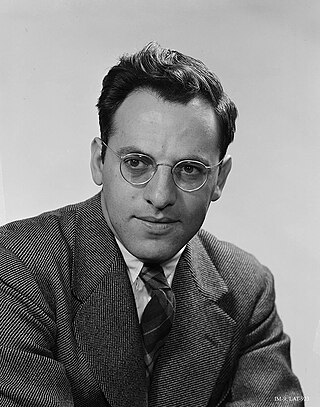
Frederick Reines was an American physicist. He was awarded the 1995 Nobel Prize in Physics for his co-detection of the neutrino with Clyde Cowan in the neutrino experiment. He may be the only scientist in history "so intimately associated with the discovery of an elementary particle and the subsequent thorough investigation of its fundamental properties."

Masatoshi Koshiba was a Japanese physicist and one of the founders of neutrino astronomy. His work with the neutrino detectors Kamiokande and Super-Kamiokande was instrumental in detecting solar neutrinos, providing experimental evidence for the solar neutrino problem.

Donald Hill Perkins was a British physicist and an emeritus professor at the University of Oxford. He achieved great success in the field of particle physics and was also known for his books.

Riazuddin, also spelled as Riaz-Ud-Din, was a Pakistani theoretical physicist, specialising in high-energy physics and nuclear physics. Starting his scientific research in physics in 1958, Riazuddin was considered one of the early pioneers of Pakistan's nuclear weapons development and atomic deterrence development. He was the director of the Theoretical Physics Group (TPG) of the Pakistan Atomic Energy Commission (PAEC) from 1974 until 1984. Riazuddin was a pupil of the winner of the 1979 Nobel Prize in Physics, Abdus Salam.
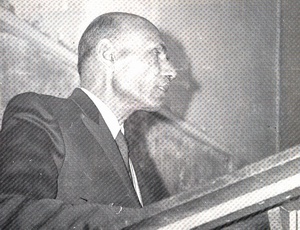
Rafi Muhammad Chaudhry FPAS HI, NI, SI, Skdt best known as R. M. Chaudhry, was a Pakistani nuclear physicist and a professor of particle physics at the Government College University. His teaching and instructions on modern physics influenced many of his student to pursue career in physics who regard him as one of the key architects of having been the pioneer of experimental nuclear physics research in Pakistan and, along with Abdus Salam and Ishrat Hussain Usmani, one of the main creators of Pakistan's nuclear weapons research program in the 1970s. Chaudhry, who served as professor of nuclear physics at Government College University, was later referred to by Dr. Samar Mubarakmand, one of his students, as "the true father of the nuclear weapons program of Pakistan".
Wick C. Haxton is an American theoretical nuclear physicist and astrophysicist. He is a professor of physics at the University of California, Berkeley and senior faculty scientist at Lawrence Berkeley National Laboratory. He was appointed a co-editor of the journal Annual Review of Nuclear and Particle Science as of 2023. In 2024, he was elected to the American Philosophical Society.

Ivan Aničin, was Yugoslav and Serbian nuclear physicist, particle physicist, astrophysicist, and cosmologist, university Full Professor and Distinguished (teaching/research) Professor of scientific institutes in Belgrade (Serbia), Bristol, Grenoble (France), and Munich (Germany).

Kameshwar C. Wali was an Indian-born American theoretical physicist who was the Distinguished Research Professor of Physics Emeritus at Syracuse University's College of Arts and Sciences. He was a specialist in high energy physics, particularly symmetries and dynamics of elementary particles, and the author of Chandra: A Biography of S. Chandrasekhar and Cremona Violins: a physicist's quest for the secrets of Stradivari.
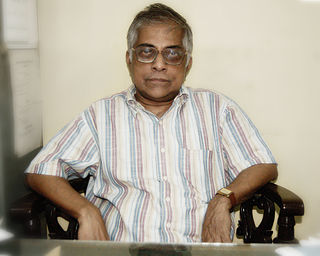
Amitava Raychaudhuri is an Indian theoretical particle physicist. He is Professor Emeritus at the Physics Department of the Science College, University of Calcutta where he earlier held the Sir Tarak Nath Palit Chair Professorship. He is the nephew of another renowned Indian physicist, Amal Kumar Raychaudhuri.
Bryan Ronald Webber, FRS, FInstP is a British physicist and academic. He was a Fellow of Emmanuel College, Cambridge from 1973 to 2010, and Professor of Theoretical Physics at the University of Cambridge from 1999 to 2010. He has been awarded the Dirac Medal by the Institute of Physics, the Sakurai Prize by the American Physical Society and the High Energy and Particle Physics Prize by the European Physical Society.

Mayly Sánchez is a Venezuelan-born particle physicist who researches at Iowa State University. In 2011, she was awarded the Presidential Early Career Awards for Scientists and Engineers (PECASE), the highest honor given by the United States to scientists who are in the early stages of their research careers, for her contributions to the study of neutrinos and her work in promoting STEM fields to women. In 2013, she was named by the BBC as one of the top ten women scientists in Latin America.
Probir Roy is an Indian particle physicist and a former professor at Tata Institute of Fundamental Research. He is also a senior scientist of the Indian National Science Academy at Bose Institute and a former Raja Ramanna fellow of Department of Atomic Energy at Saha Institute of Nuclear Physics.

Palash Baran Pal is an Indian theoretical physicist, an Emeritus Professor in the Physics Department of Science College, Calcutta University, Kolkata, a writer, a linguist and a poet. His main area of research is Particle Physics. His works in the area of neutrino physics and relativistic treatment of particle properties in matter are well recognized in the particle physics community. Apart from his scientific contributions, he has authored well known text books in physics as well as several popular science literature in Bengali to popularize science. He was the first to create digital Bengali fonts for IBM PC.
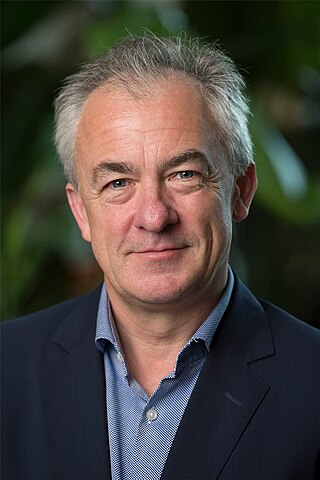
Mark Thomson is a British particle physicist. He is a Professor of Experimental Particle Physics at the Cavendish Laboratory at the University of Cambridge and a Fellow at Emmanuel College, Cambridge. Since January 2018, he has been the Executive Chair of the Science and Technology Facilities Council, one of the nine councils of UK Research and Innovation. Thomson is a delegate of the United Kingdom to CERN Council, the Square Kilometre Array Observatory (SKAO) and European Spallation Source ERIC (ESS).. Thomson has been selected by CERN Council to be the next CERN Director-General starting in 2026.
Ulrich Mosel is a German theoretical physicist, professor emeritus at Justus-Liebig-Universität Giessen, Germany
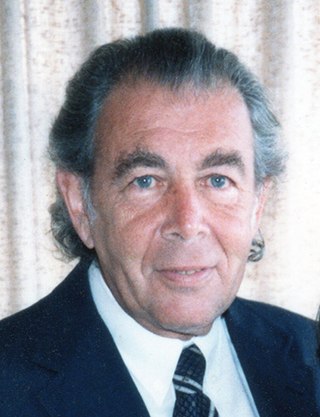
Martin Moses Block was an American physicist, known as a co-discoverer with Aihud Pevsner of the eta meson in 1961.
Subir Sarkar is an Indian astroparticle physicist and cosmologist, known for his research demonstrating constraints on the dark sector.
References
- ↑ Paperback: December 2015, 978-0956275646 (Wade Allison Publishing).
- ↑ Paperback: October 2009, 978-0956275615 (Wade Allison Publishing).
- ↑ Paperback and hardback: October 2006, 978-0199203895 (Oxford University Press).
- ↑ Wade Allison. Oxford Biomedical Imaging Network, 2011. Retrieved 14 September 2011.